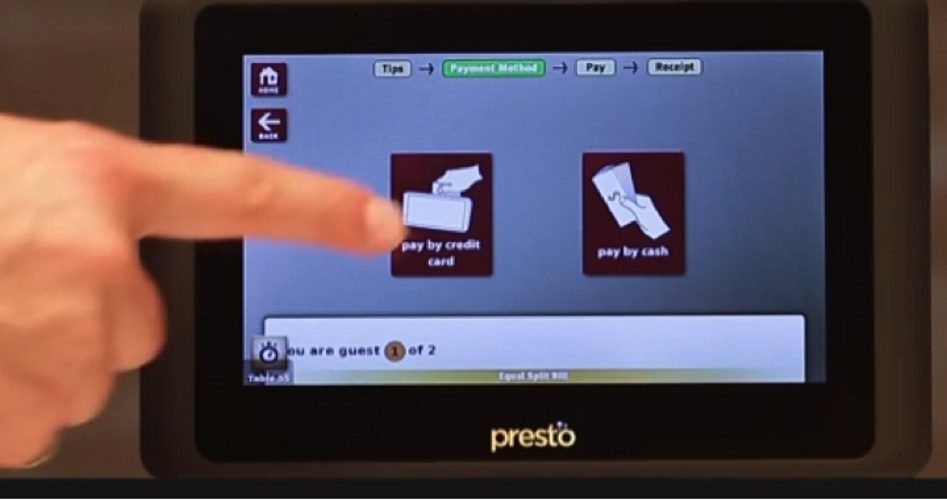
Long before calls for a higher minimum wage became headline news, fast-food restaurants such as Applebee’s and Chili’s were already moving toward the use of robots to replace waiters. The day before President Obama called for an increase in the minimum wage last December, Applebee’s announced it would be replacing its servers with Presto — a table tablet that customers can use to order and to pay their bills (shown). Commenting on Presto’s advantages, Annie Lowry wrote in National Review:
Each console goes for $100 per month. If a restaurant serves meals, eight hours a day, seven days week, that works out to $.42 per hour per table — making the Presto cheaper than even the very cheapest waiter.
Moreover, no manager needs to train it, replace it if it quits, or offer it sick days. And it doesn’t forget to take off the cheese, walk off for 20 minutes, or accidentally offend with small talk, either.
{modulepos inner_text_ad}
For as little as $20,000, a new breed of robots called collaborative machines is now making factory workers much more efficient in small manufacturing companies across the country. Panek Precision, Inc., a Northbrook, Illinois, machine shop, has just installed 21 new Universal Robots designed to move parts in and out of its metal cutting machines, a tedious and dangerous task that used to be done by machine operators earning $16.50 an hour. One of those robots doubled the output from a machine that was previously operated solely by a human. Part of the efficiency gain is, according to Gregg Panek, the company’s president, “because robots work overnight and don’t take lunch breaks and they just keep going.”
These collaborative machines have worked out so well that Panek plans to invest in 14 more of them by the end of next year. In response to the common objection that his robots are putting his people out of work, Panek answered, “Having the robots has allowed us to move our existing workers into more useful tasks. We’ll always need people.” One of Panek’s people, Jesus Hernandez, used to operate just one machine. Said Fernandez, “At first, I had doubts the robots could do what I did, moving the parts around, handling the parts.” But he timed himself against one of the robots and said, “I’m fast, but the robots are faster.” Fernandez now oversees three of those machines.
A large jewelry manufacturing company in Lafayette, Louisiana, Stuller Inc., invested in a collaborative machine made by Adept, which was shortly renamed Fred by its coworkers. Looking like a tall water cooler on wheels, Fred roams throughout the company’s 600,000 square-foot plant delivering tools to their workers and then putting them away when they’re done with them. Fred is working out so well that Stuller plans to invest in a second robot for its stone cutting department.
A toymaker in Hatfield, Pennsylvania, bought a robot from Rethink Robotics, which company workers quickly named Baxter. Baxter has been programmed to pick up and move parts and even do simple assembly of them. It’s all about remaining competitive in a highly competitive global industry. Said Michael Araten, the president of K’NEX Brands, LLC, “When something comes off the line and has to be handled, it becomes labor intensive and that makes us not globally competitive. So it’s important to make that automated.”
Baxter is the first iteration of collaborative machines, much like the iPhone, said Araten: “I look at Baxter like the iPhone I — it was good, but it was just the beginning in the development of smart phones.”
The robots aren’t coming; they’re already here. And they are turning on its head the statist assumption that robots are creating unemployment. Instead, these table tablets and collaborative machines are reducing labor costs which has always resulted, ultimately, in an improved standard of living for everyone. It’s simple economics: When the price of something comes down, more will be demanded. When prices come down, paychecks stretch further.
A graduate of Cornell University and a former investment advisor, Bob is a regular contributor to The New American magazine and blogs frequently at www.LightFromTheRight.com, primarily on economics and politics. He can be reached at [email protected].



